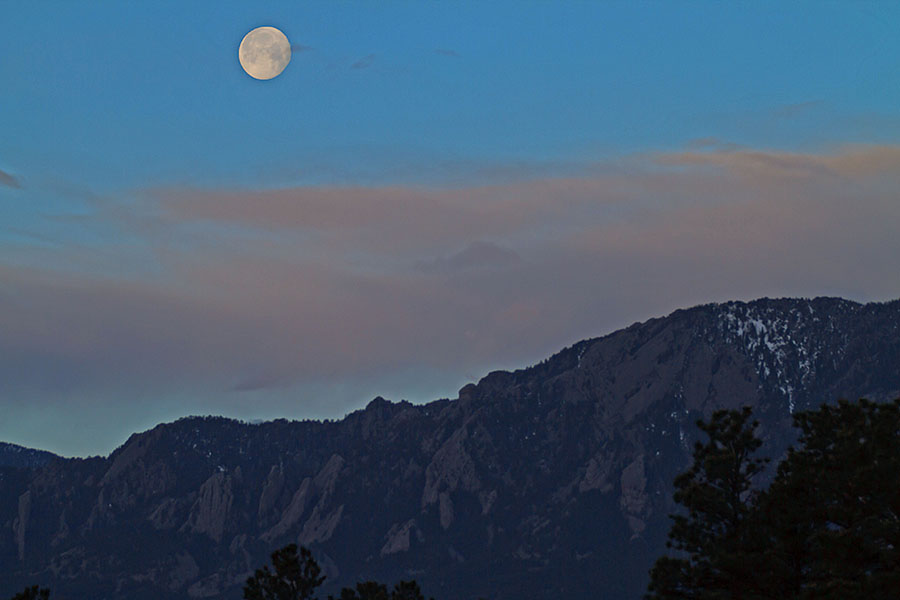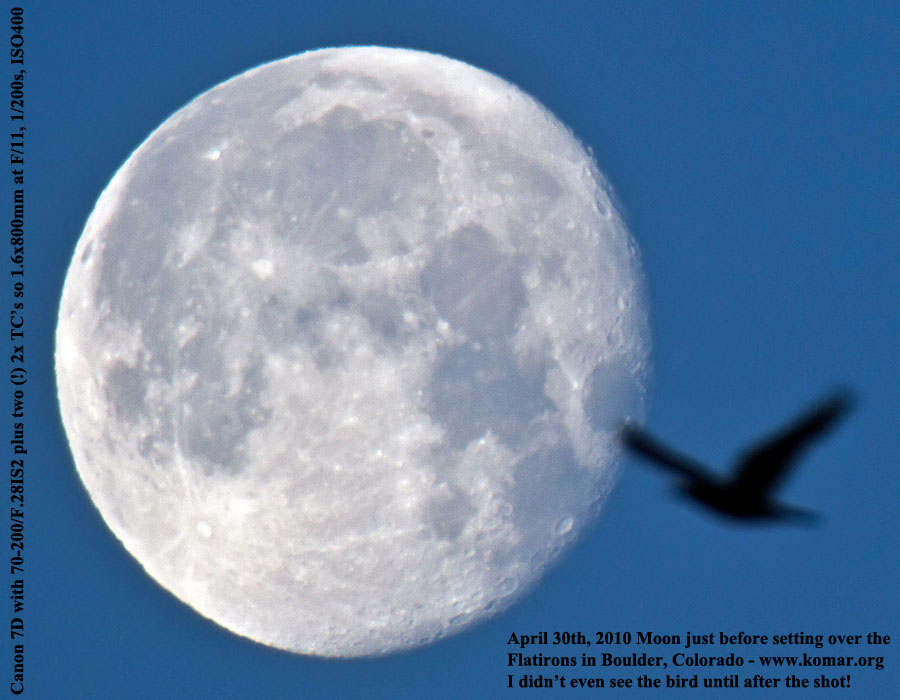I setup the Canon 7D on a tripod with a 55-250mm telephoto lens with
manual exposure and had the auto-timer firing every 3 seconds as the
moon set over the mountains.
The 18 mega-pixels of the 7D provides
super-duper high-def, so I've resized it down 25% to 1,296x864
- here's the actual as-shot movie and what you see
below is a 50% crop.
Beautiful sunrise (click here for full-res) ... but these clouds are blocking the sun on the mountains - darn!
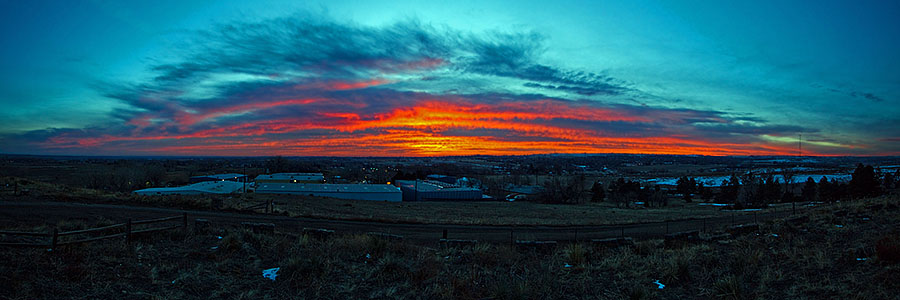
It's very nice to just drive to the vantage point on Arapahoe
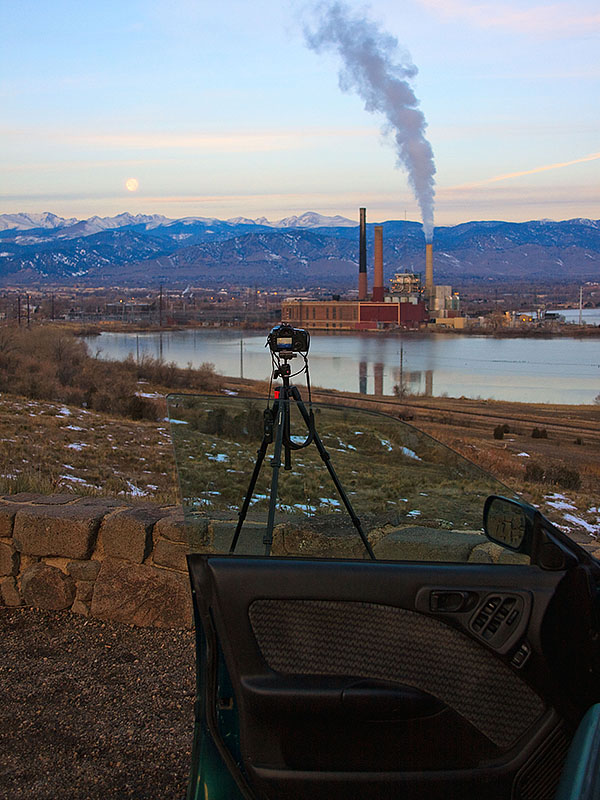
Despite drinking too much Tequila the night before, I felt pretty chipper
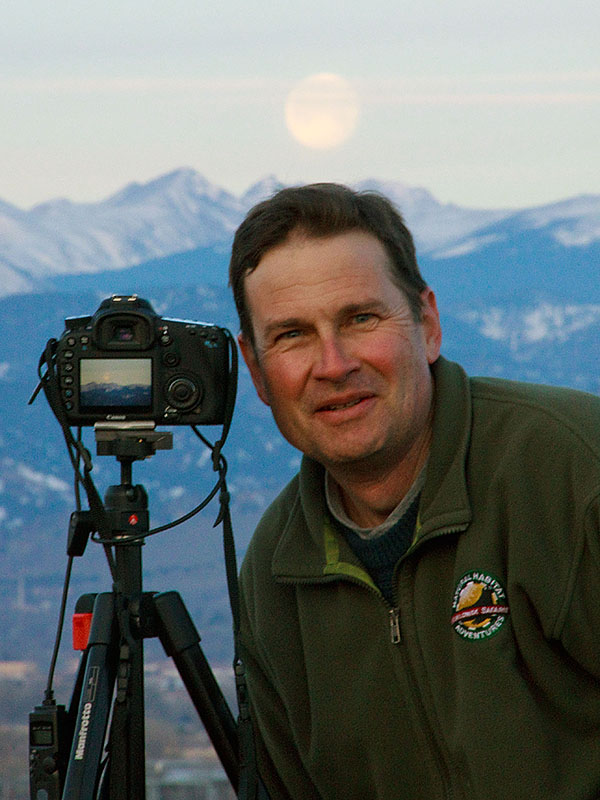
Canon 7D on tripod (electronic level is nice) auto-firing every 3 seconds using timed release
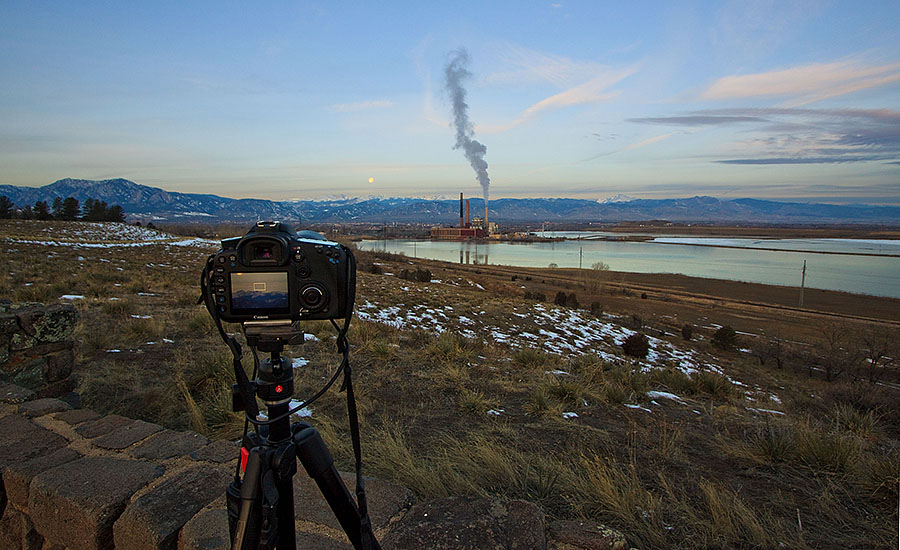
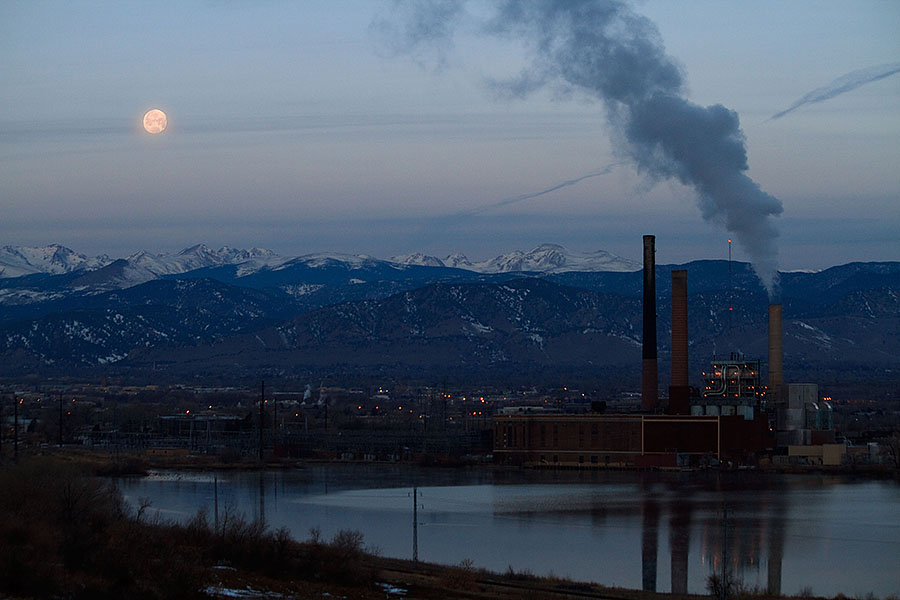
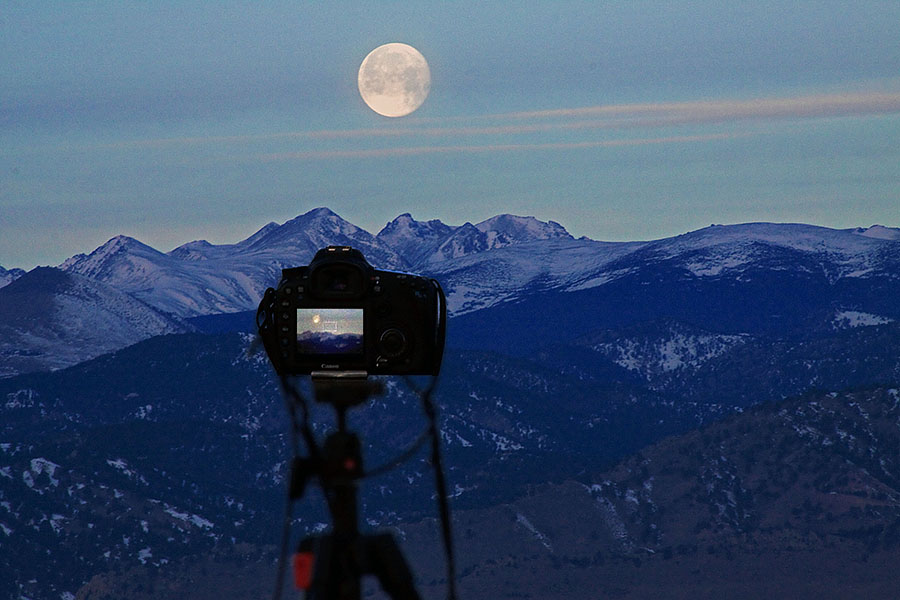
Here's what the AlpenGlow (reflected sunlight just before sunrise) looks like on Mount Meeker and Longs Peak
These pictures were taken a year ago from the same location - mouseover image to see daytime shot
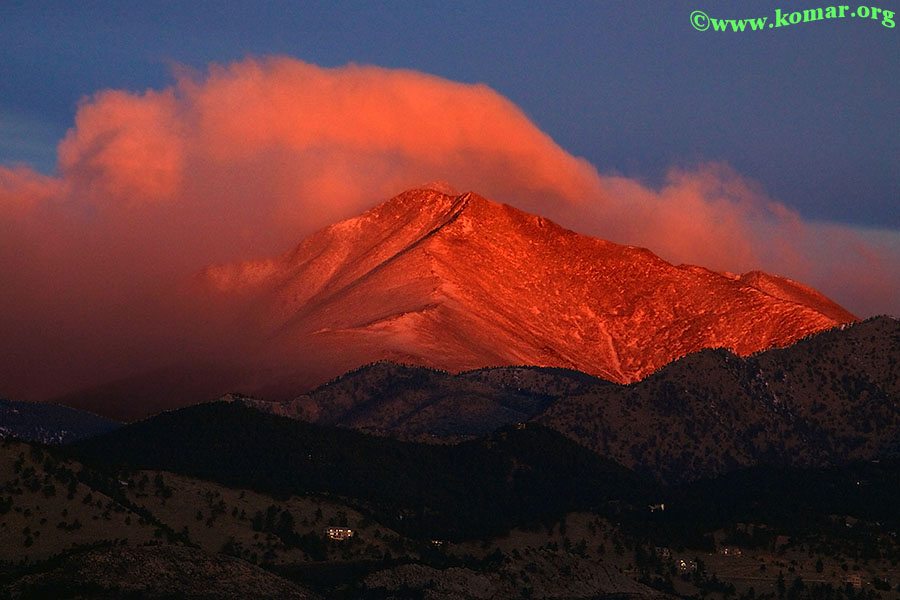
If the Movie doesn't play at top, here's a link to the file
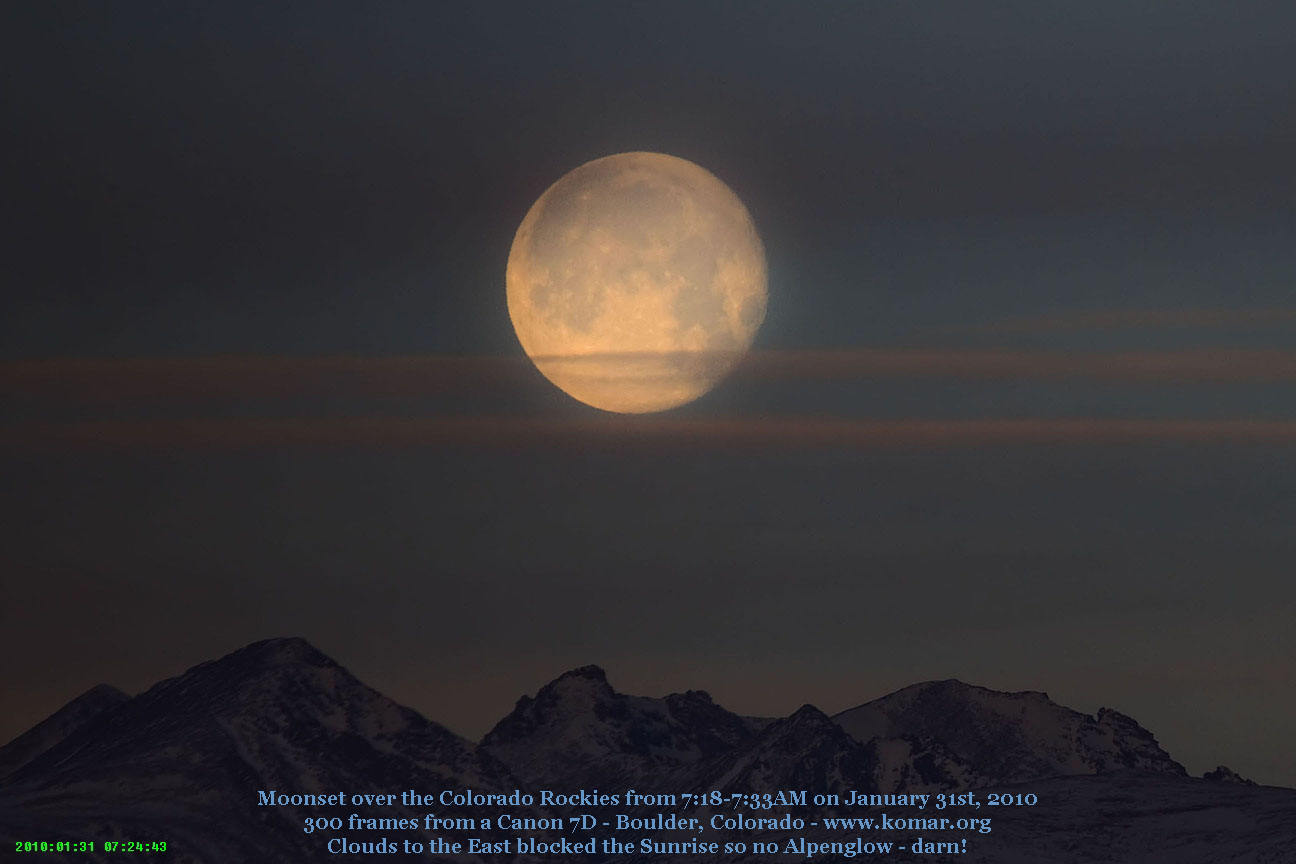
Image brightened - mouseover image to see as-shot
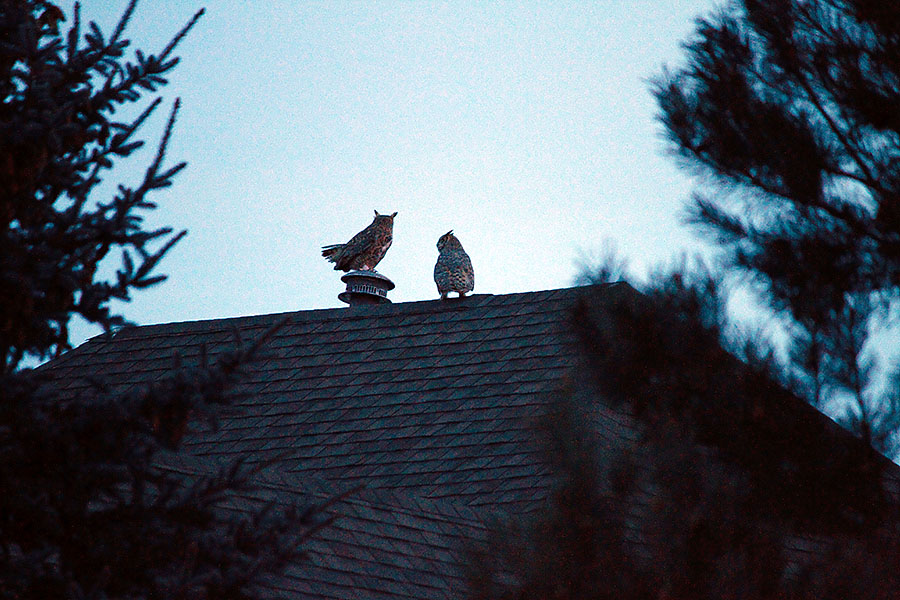
Those are some well fed owls - I would not want to be a mice right now!
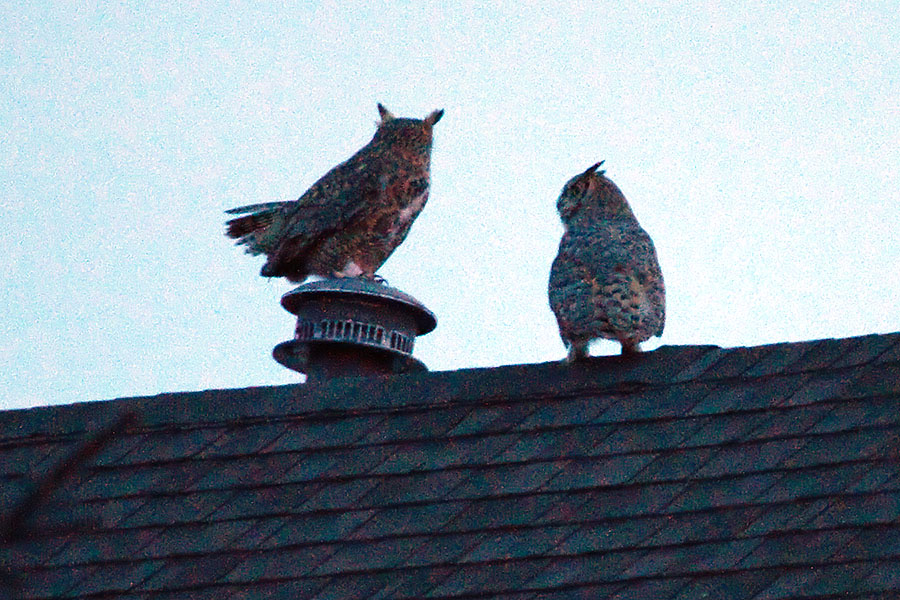
As implied, I'll have to try this again and hopefully not have the rising sun blocked by clouds. The moon moves surprisingly fast (especially when shot through a telephoto lens), so I think a shutter speed of 1/250 would provide better detail. I also think closing down slightly to F/8 would yield some increased depth of field and not as sensitive to manual focusing. Finally, I was a bit overexposed (corrected the RAW's -1), so my next settings will be 1/250s, F/8, and ISO400. The tripod worked very well with the auto-timer release, and shooting every two seconds (versus three) will yield a smoother result, plus at 30fps, will be a minute per second. And would be nice to use a bigger lens if I can borrow one.
So the first full moonset was on April 30th, 2010 with sunrise time of 6:02AM and moonset of 7:11AM. That more of a gap than I'd like, since it will be too bright by time the moon goes down. Plus the weather was cruddy, so while I set my gear out, I didn't set an alarm. So what 'ya know, I happen to wake up at 5:30 and to the West the sky is a very dark blue with the moon setting pretty far to the South over the Flatirons. So I figure what the heck, lets rally!
Initial View from the Arapahoe lookout - looks good ... except for that low layer of clouds - darn!
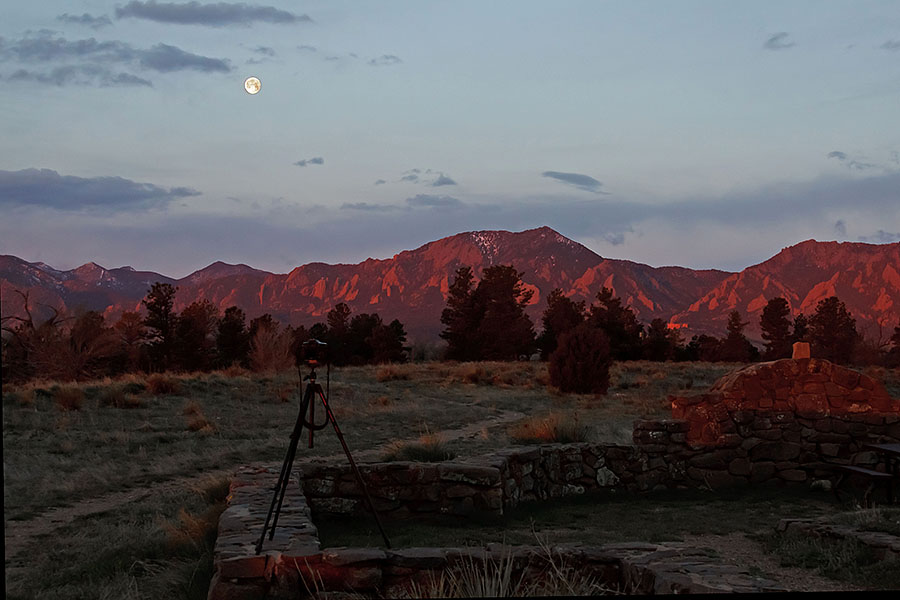
Looking East to the sunrise - solid cloud bank after the initial light - double darn!
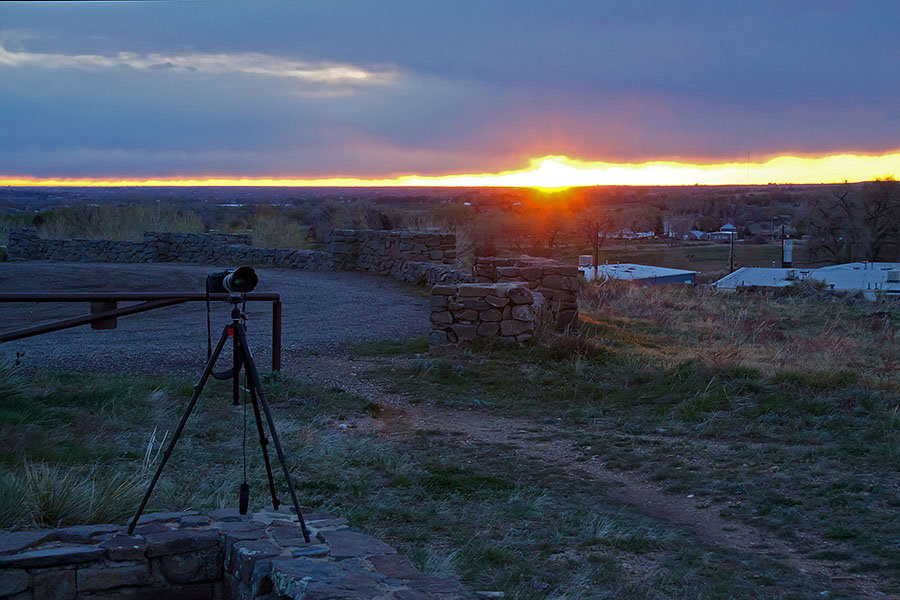
The Canon 7D with 70-200/F2.8IS2 with two 2x TC's tripod mounted
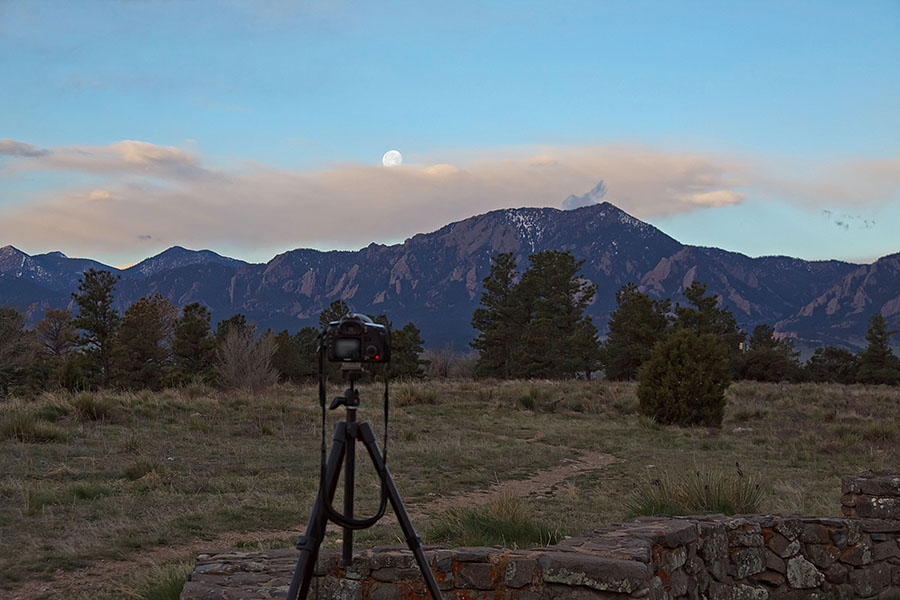
The 7D image is much, much tighter than this ... but those darn clouds! :-(
